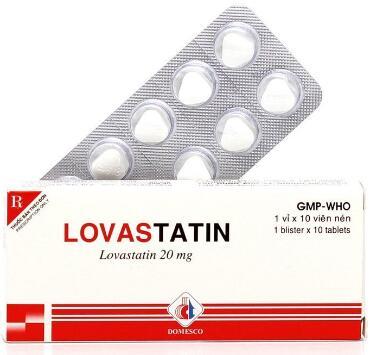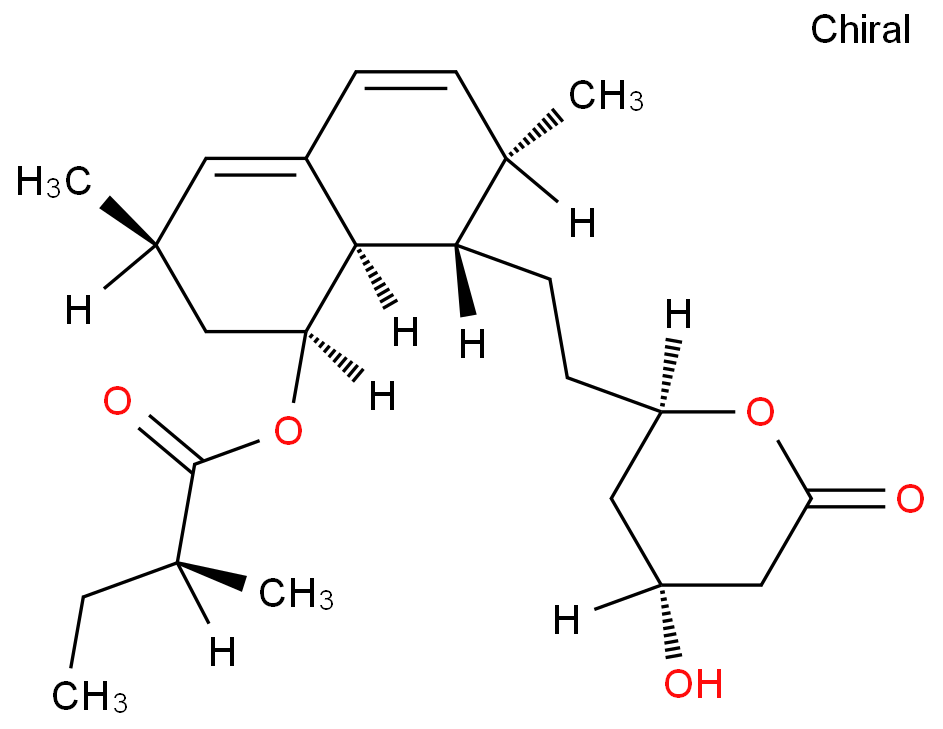 |
Lovastatin is a novel fully synthetic hydroxymethylglutaryl-CoA reductase inhibitor and is one of the most effective lipid-lowering drugs currently available.

Lovastatin competitively inhibits the rate-limiting enzyme hydroxymethylglutaryl-CoA reductase in cholesterol synthesis, reducing cholesterol synthesis and increasing the synthesis of low-density lipoprotein receptors. Its main action is in the liver, resulting in lower levels of blood cholesterol and low-density lipoprotein cholesterol, which plays a role in preventing and treating atherosclerosis and coronary heart disease. It also lowers serum triglyceride levels and increases high-density lipoprotein levels. In mice, doses 3-4 times higher than the human dose can be carcinogenic, but no increase in tumor incidence has been observed in large-scale, long-term clinical trials in humans. Existing studies have not found this drug to have mutagenic effects.
The oral dose is 20mg/day, taken with dinner. Dose adjustments should be made at intervals of at least 4 weeks, with a maximum dose of 80mg/day, taken twice daily with breakfast and dinner. For patients using immunosuppressants, the maximum dose is 20mg/day, and the total cholesterol and LDL cholesterol should be reduced to below 140mg/dl and 75mg/dl, respectively, before reducing the dose.
Elevations in serum transaminase levels caused by Lovastatin are usually mild, asymptomatic, and temporary. In a prospective monitoring large-scale study analysis, 3% to 5% of patients had elevated serum alanine aminotransferase levels within the normal range; 0.4% of patients had elevated serum alanine aminotransferase levels more than 3 times the upper limit of normal; in the placebo group, this proportion was 0.1%. Elevated serum alanine aminotransferase levels are usually associated with high doses, with 0.1% of patients at a daily dose of 20 mg, 0.9% at a daily dose of 40mg, and 1.5% at a daily dose of 80 mg having levels more than 3 times the upper limit of normal.
Most cases of elevated serum alanine aminotransferase levels are self-limiting and do not require dose adjustment. However, if the levels rise to more than 10 times or persistently rise to more than 5 times, it is recommended to discontinue the medication. Lovastatin may also cause clinically significant liver damage, but this is rare. The latency period for liver damage varies from weeks to years. The type of liver damage is usually cholestatic, but can sometimes be hepatocellular. Rash, fever, and eosinophilia are uncommon, and autoimmune symptoms are also rare.
Common side effects of Lovastatin include muscle pain, muscle weakness, and shoulder pain. Rare side effects include increased risk of diabetes, cognitive impairment, and rhabdomyolysis.
 |